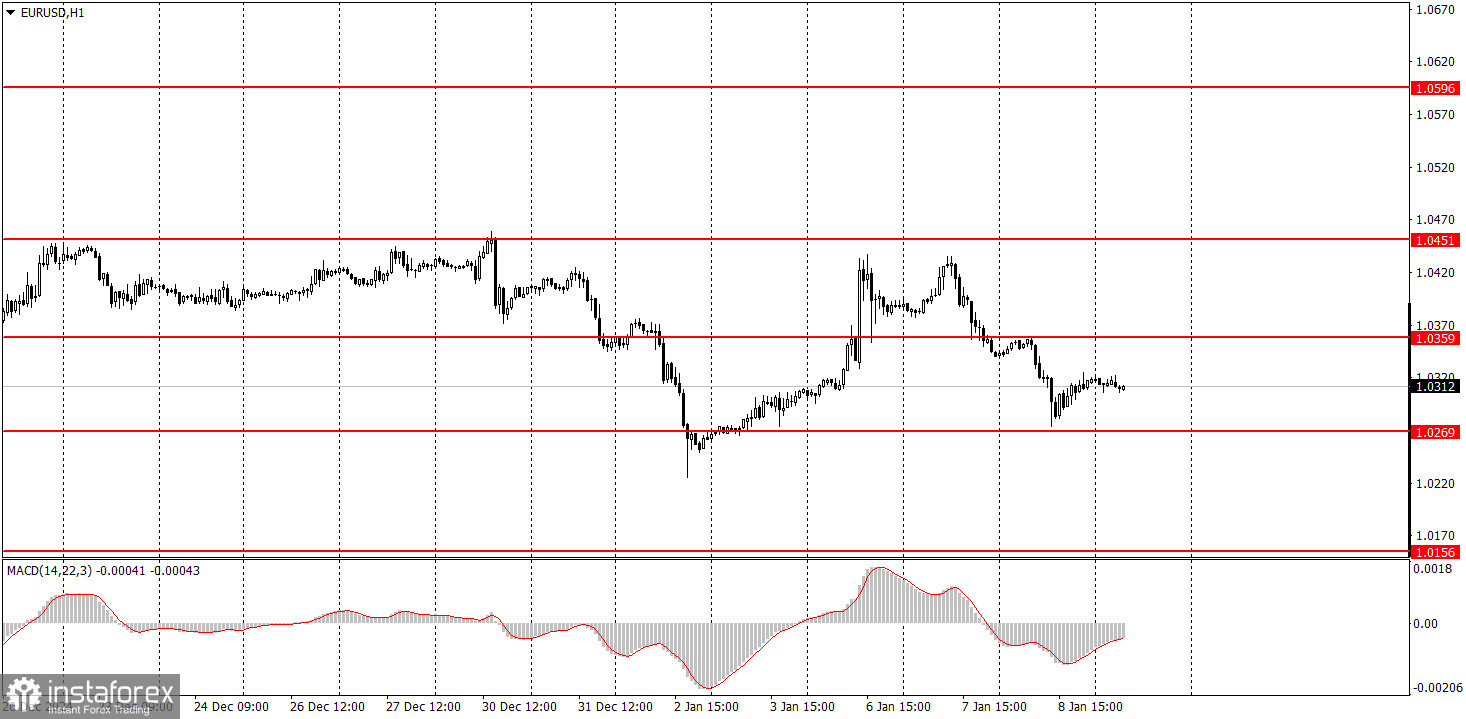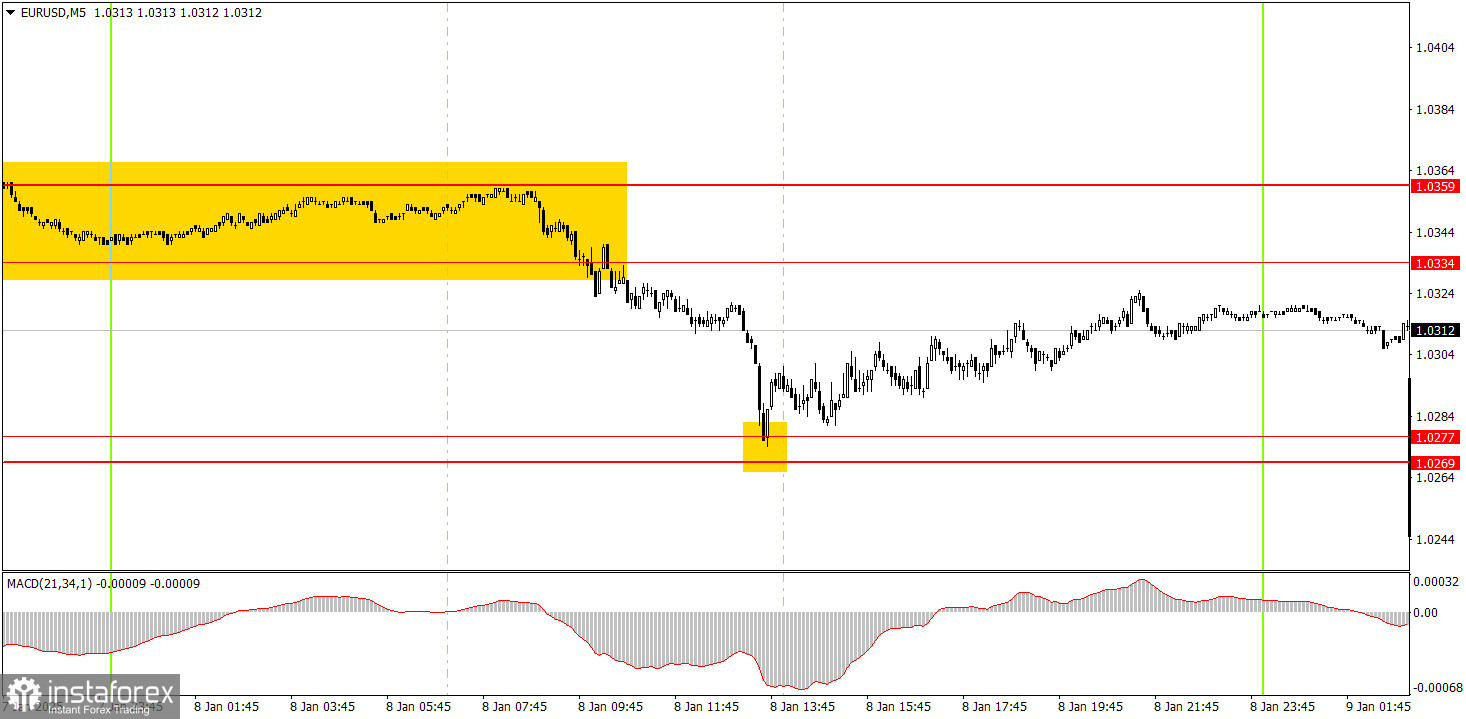Analysis of Wednesday's Trades
1H Chart of EUR/USD

The EUR/USD currency pair continued its decline on Wednesday, a trend that began on Tuesday. This drop raises some questions considering the local macroeconomic environment, but it aligns with the broader global factors at play. In simpler terms, there weren't any strong local reasons for the euro to fall yesterday; however, wider issues, particularly concerning the U.S. and the EU, explain this decline.
Although Germany's retail sales report was very weak, the ADP employment report from the U.S. also showed weakness. As expected, the Federal Reserve minutes did not elicit any significant market reaction. Consequently, the euro appears to be on the verge of further decline. While it is unclear whether the downtrend will continue today, the prevailing expectation leans toward a decline, with decisions to be made based on technical signals. There is potential for the euro to drop further, but we may also see a period of flat movement in the near term, as the price has previously struggled to break below the 1.0269 level.
5M Chart of EUR/USD

On the 5-minute timeframe for Wednesday, a sell signal emerged in the 1.0334-1.0359 area, which began forming on Tuesday. This signal proved to be accurate, as the price eventually reached the nearest target of 1.0277. A bounce from this level then generated a buy signal, allowing novice traders to open long positions. Both of these trades were profitable, as the day's volatility was decent and the signals were reliable.
Trading Strategy for Thursday:
On the hourly timeframe, the EUR/USD pair appears poised to continue its three-month downtrend. We believe that the euro's decline has resumed in the medium term, with little distance remaining until parity is reached. As previously noted, the euro is expected to depreciate, especially given the fundamental and macroeconomic factors favoring the U.S. dollar.
Novice traders can expect relatively calm movements on Thursday, as few news releases are scheduled. The intraday direction will likely be influenced by technical signals.
On the 5-minute timeframe, consider the following key levels: 1.0156, 1.0221, 1.0269-1.0277, 1.0334-1.0359, 1.0433-1.0451, 1.0526, 1.0596, 1.0678, 1.0726-1.0733, 1.0797-1.0804, and 1.0845-1.0851. On Thursday, the Eurozone will release a report on retail sales, while Germany will publish its industrial production data. No major news is expected from the U.S. The scheduled reports are not anticipated to have a significant impact.
Core Trading System Rules:
- Signal Strength: The shorter the time it takes for a signal to form (a rebound or breakout), the stronger the signal.
- False Signals: If two or more trades near a level result in false signals, subsequent signals from that level should be ignored.
- Flat Markets: In flat conditions, pairs may generate many false signals or none at all. It's better to stop trading at the first signs of a flat market.
- Trading Hours: Open trades between the start of the European session and the middle of the US session, then manually close all trades.
- MACD Signals: On the hourly timeframe, trade MACD signals only during periods of good volatility and a clear trend confirmed by trendlines or trend channels.
- Close Levels: If two levels are too close (5–20 pips apart), treat them as a support or resistance zone.
- Stop Loss: Set a Stop Loss to breakeven after the price moves 15 pips in the desired direction.
Key Chart Elements:
Support and Resistance Levels: These are target levels for opening or closing positions and can also serve as points for placing Take Profit orders.
Red Lines: Channels or trendlines indicating the current trend and the preferred direction for trading.
MACD Indicator (14,22,3): A histogram and signal line used as a supplementary source of trading signals.
Important Events and Reports: Found in the economic calendar, these can heavily influence price movements. Exercise caution or exit the market during their release to avoid sharp reversals.
Forex trading beginners should remember that not every trade will be profitable. Developing a clear strategy and practicing proper money management are essential for long-term trading success.





















